The Integrated Workplace, Part 3: Adapting Your Office to New Flex Work Policies
One year after COVID-19 forced shutdowns across the globe, the optimistic news of vaccine rollouts also offers promise for employers who have managed a remote workforce for the past year: it’s time to plan for bringing your employees back to the workplace.
Locally, H&R Block recently shared its new plan for returning to the office. They join other high-performing companies on a national scale who are announcing their long-term plans for flex or hybrid work policies. Recent research from PwC’s newly released US Remote Work Survey supports these policy changes, highlighting:
- 83% of employers now say the shift to remote work has been successful
- Only 5% of executives think company culture will survive a purely remote working set up
- 87% of employees say the office is important for collaborating with team members and building relationships
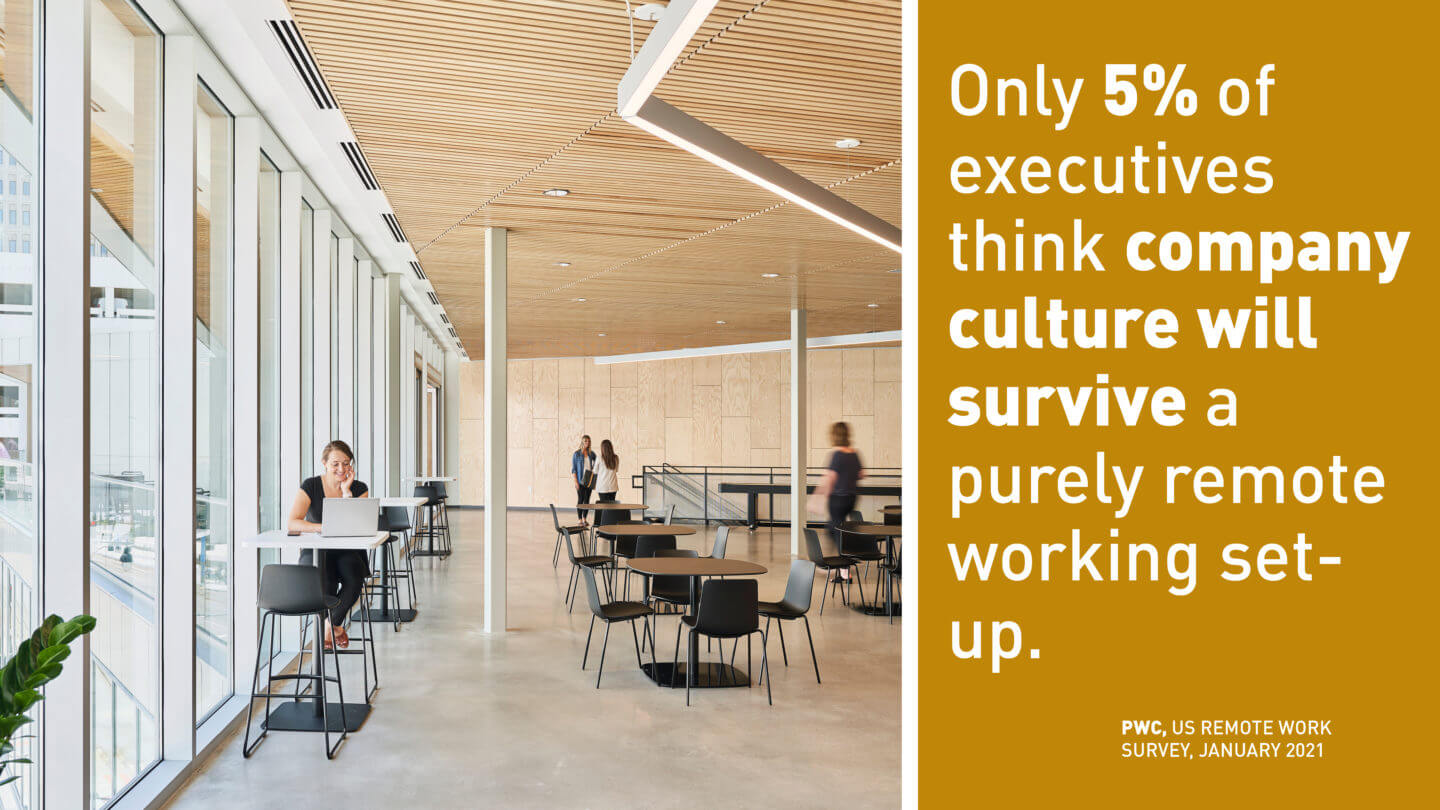
The result is that, “most companies are heading toward a hybrid workplace where a large number of office employees rotate in and out of offices configured for shared spaces. This model embraces the flexibility that most employees (and some employers) crave after working from home for months.”
Further research from the American Psychological Association bolsters this approach, reporting that “companies with flex-work programs experience “lower absenteeism, higher performance, a healthier workforce and lower turnover of high-value employees.”
If your company is considering long-term hybrid/flex work policies you may already be asking yourself: how will this impact our office space?
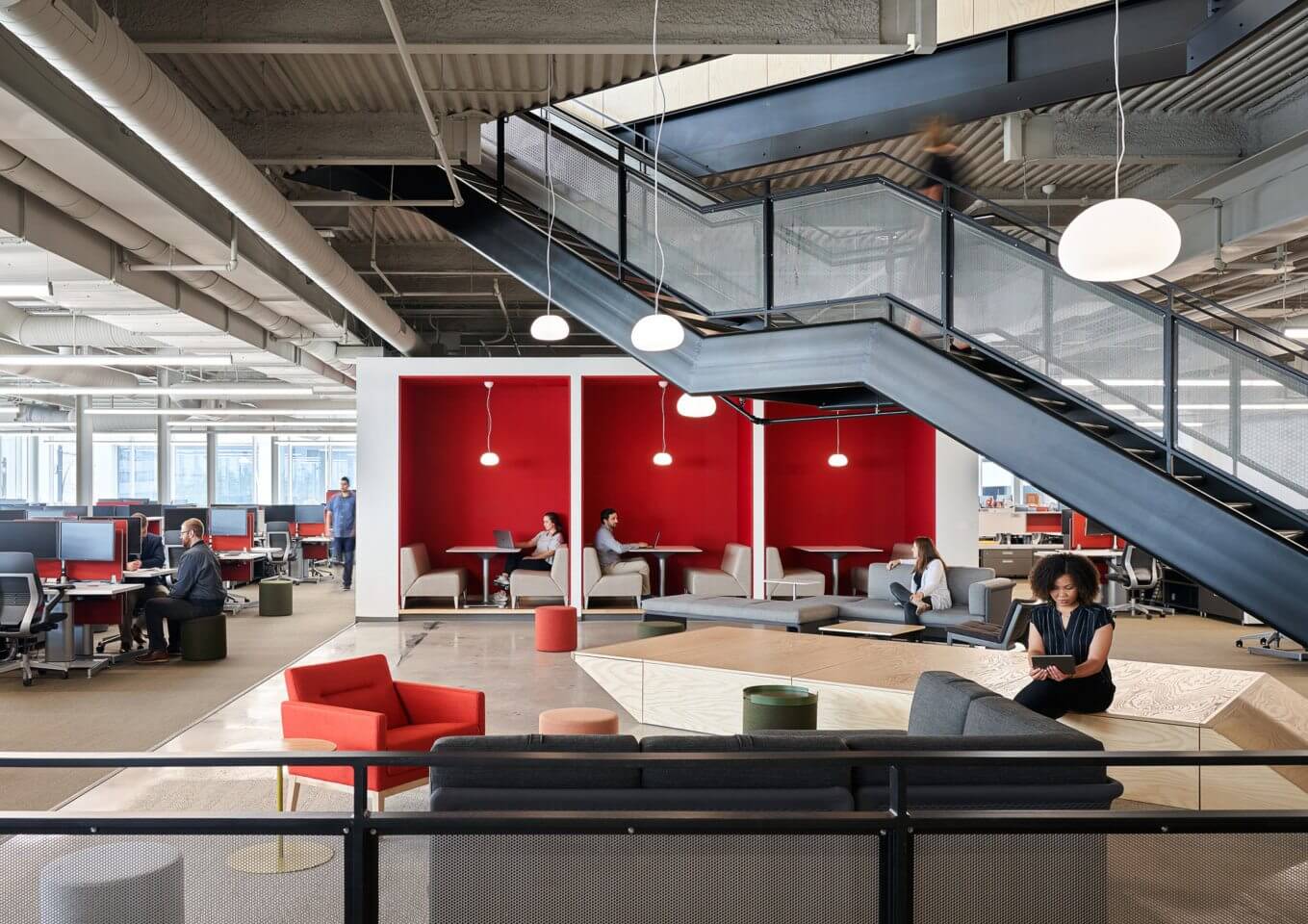
In late 2019, Global Workplace Analytics reported that on average, “desks are vacant 50-60% of the time.” With many employees continuing to work from home part-time after the pandemic, this number is projected to increase.
Proper alignment of your office space with flexible work policies can support key cultural and financial goals by:
- Maximizing your real estate investment
- Enhancing employee engagement
- Attracting and retaining top talent
One strategy for increasing utilization of this valuable real estate is a free address approach to seating. In a free address environment, employees do not have one dedicated desk but instead are given a variety of seating options that can be utilized throughout the day.
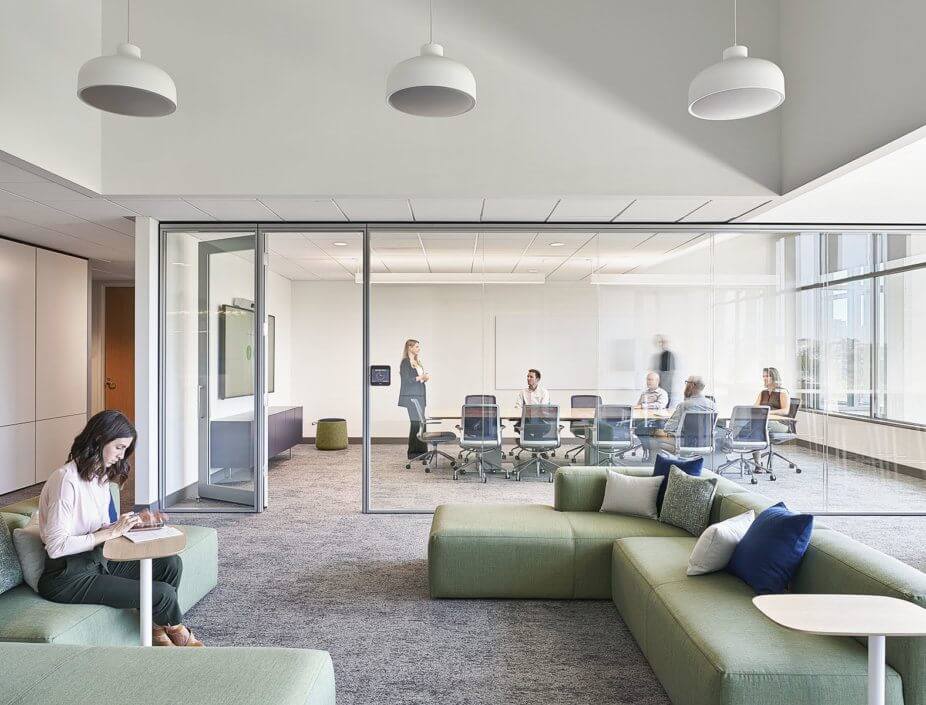
Even prior to the pandemic, our clients were incorporating more choice in the workspace – offering a variety of seating options for employees to utilize throughout the day. A free-address approach can build off of this existing workplace strategy to offer increased flexibility.
A free-address strategy should be structured to accommodate the varied workstyles of your employees. One example is Microsoft’s recently announced “hybrid workplace,” which allows employees to opt into a remote work option for up to 50% of the time. Those who choose to work from the office full-time can maintain a dedicated desk while those who choose the remote work option will give up their assigned desk.
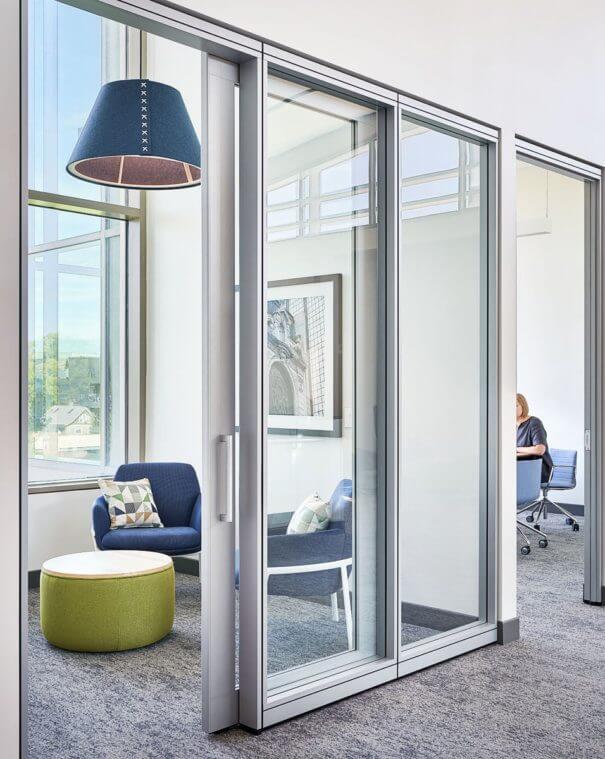
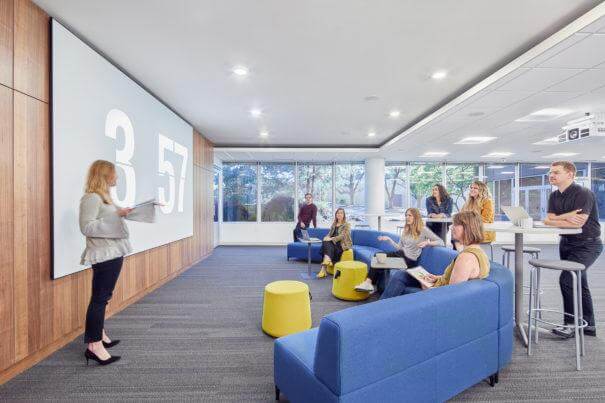
- Engage employees from across the organization
- Use data to guide design
- Address personal storage
- Integrate technology
- Communicate clearly and regularly

Resources + Further Reading:
- PwC’s US Remote Work Survey – January 12, 2021
- Hidden Brain Podcast: When You Start to Miss Tony from Accounting
- McKinsey: Reimagining the office and work life after COVID-19
- Knoll: Unassigned Workspace Etiquette Introducing Policies, Protocol, and Politeness
- Safety Culture: Workplace reopening checklists